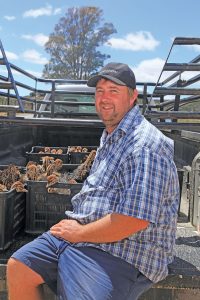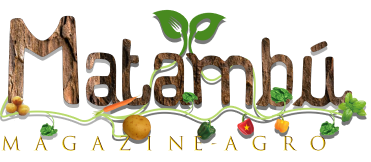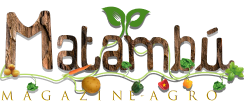[ad_1]
Derec Giles admits that he wouldn’t have been in a position to financially survive the continued drought on his farm within the Klein Karoo with out his extremely diversified method to manufacturing. He spoke to Glenneis Kriel about every of his enterprises.
Photo: Glenneis Kriel
“I was born with a passion for farming and never missed an opportunity to be on the farm with my grandfather, Fonnie Barnardt. I spent most of my after-school hours working there.”
So says Derec Giles, recalling his childhood on the household farm, Dwarsfontein, which lies 12km from Uniondale within the Western Cape’s Klein Karoo. Apart from this hands-on expertise, he additionally obtained the fitting theoretical coaching, attending Oakdale Agricultural High School in Riversdale.
Sadly, Barnardt died in 1998, so it was determined that Giles ought to transfer to Uniondale High School to be nearer to the farm to assist run it. His father was, at that stage, the monetary supervisor of the Parks Board within the Southern Cape and was typically away from house.
“Then, in 2011, my wife Charmaine and I started renting the farm out of the family trust,” says Giles.
He admits that whereas it had all the time been his dream to farm, it has not been a straightforward journey due of an absence of finance. But these hardships taught him to benefit from what he had and, extra importantly, to take powerful enterprise choices.

“I learnt early that you can’t farm for sentimental reasons. Everything you do needs to be economically justifiable in its own right.”
Vegetable seed manufacturing
Giles needed to adapt most of the farming actions to show the farm right into a sustainable unit. The dairy, as an illustration, was unable to attain economies of scale, so he removed all his dairy cattle in 2010. With the earnings, he cleaned the farm dam and, as funds allowed, put in irrigation traces on 20ha to transform from flood to sprinkler irrigation.
The shift drastically improved the farm’s water-use effectivity, enabling the irrigation of extra land extra continuously and for longer intervals. It additionally meant important labour financial savings, as land may now be irrigated by the mere flip of a faucet.
In addition, sprinkler irrigation allowed Giles to plant extra feed crops and vegetable seed, one thing for which he seems to have a knack, judging by the awards he has gained since beginning manufacturing of those crops in 2009. These had been in recognition of the highest quality and highest returns achieved with particular vegetable seed crops.
“Our dry climatic conditions are ideal for vegetable seed production, but the plants need adequate water for optimal yield,” he says.
The seed is produced below contract for Klein Karoo Saad, which provides Giles with the seed of the precise varieties required, accompanied with a manufacturing technique and help to make sure good yields.
Production is rotated to forestall a build-up of ailments, and a selected crop is due to this fact planted in the identical land solely each fourth yr. So far, Giles has produced seed for leeks, carrots, spinach, pumpkins, beans, onions, spring onions and rocket.
While he has produced 10ha of vegetable seed at his peak, the drought has compelled him to chop again to 3ha. “It’s unfortunate that we can’t plant to our full potential, as vegetable seed production is a great provider of jobs. We’re can now employ about 35 people during the season, 90% of whom are regular employees,” he says.
The manufacturing season varies in line with crop and selection, with spring onions, for instance, being planted in March or April and harvested round November. Only one selection will be produced at a time, because the seed needs to be dried individually to forestall contamination. Giles has refurbished the previous farm dairy to make use of it as a facility for this.
Sheep manufacturing
In response to the drought, Giles did away with the farm’s Boer goat stud in 2017 and began a feedlot together with his uncle, Cornell Barnardt, so as to add worth to the sheep produced on the farm.
“The company we started, Correc Vee, took over all my Dohne Merino ewes and sourced additional ewes to increase the herd size. The ewes are crossed with Dormer rams to add hybrid vigour,” Giles explains.
The partnership modified the best way by which he managed the sheep. Instead of getting one or two mating seasons throughout the yr, he separates small teams of ewes from the principle flock within the veld as soon as a month for mating. He locations these small teams in camps with planted pastures akin to lucerne, oats and sorghum to get them in prime situation for the mating season and preserve their situation thereafter.
“This reduces the impact of the sheep on the veld during the mating season and improves cash flow, as we have more grazing to feed small groups of animals instead of a whole flock at a time,” he says.
The ewes was synchronised every month to lamb on the identical time, however this turned too costly.
The low rainfall of the previous yr introduced one other problem: they needed to downscale mating to as soon as each different month.
To guarantee a excessive proportion of conception, Giles makes use of one ram for each 5 ewes. The rams are additionally stored in prime type, as they’re used recurrently. They obtain satisfactory extra feed and are changed when their fertility declines and they’re now not in a position to preserve their situation on the veld.
Giles explains that they purchase two to a few new rams every year, based mostly on BLUP values regarding the manufacturing of multiples and the expansion potential of their offspring.
The swap in the best way that lambs are produced has boosted the farm’s lambing proportion from 110% to 155% or greater.
The lambs obtain creep feed from an early age to allow them to be weaned when they’re six to eight weeks previous and weigh between 15kg and 16kg; that is in distinction to most farms, the place they’re weaned at 12 weeks at a weight of 22kg.
“Weaning this early is not ideal, but it takes strain off the ewes and speeds up recovery,” says Giles.
He and Barnardt used to purchase in sheep for the feedlot, however discovered that this didn’t work effectively. “The problem is that we didn’t know what we were going to get. “Many of the sheep didn’t grow well, and this ate into our profits. In addition, price fluctuations meant we made a loss, because we bought the weaners for more than we could sell them a few months later.”
Animals within the feedlot obtain a balanced ration blended on the farm. The lambs are bought both as retailer lambs once they weigh 25kg to 33kg, or as slaughter lambs at 40kg to 50kg, relying on pricing.
Ostriches
Giles has partnered with ostrich farmers since 2002, and in 2010 entered into an settlement with Amie Snyman to lift among the latter’s breeding ostriches at Dwarsfontein.
The eggs are incubated in Uniondale, and Snyman takes the majority of the hatchlings to lift himself. Giles then takes as most of the the rest as he can feed with the out there lucerne on the farm, and raises them for Snyman till they’re three to 4 months previous.
During their first 4 weeks on the farm, the chicks are stored in an previous farmhouse at night time and brought exterior throughout the day. Thereafter they’re positioned in cellular cages which might be moved two or 3 times a season (October to February) over the lucerne lands.
Each space is limed as soon as the chicks are eliminated and never used once more till the subsequent season. The ostriches are stored in a single pasture for 2 to a few years, after which the realm is rested for 3 years to interrupt parasite-related illness cycles.
Giles factors out that elevating the chicks is intensive work, as they’re extremely delicate to temperature fluctuations throughout their first three to 4 weeks. Closing the home windows isn’t the reply, nonetheless, as they’re additionally delicate to excessive humidity ranges, which enhance as a result of respiration.
“We use heating lamps to keep the chicks warm when they’re small, and keep the rooms well ventilated to prevent respiratory diseases that might develop because of high humidity levels,” he says.
He provides that protecting the chicks at optimum environmental ranges is additional sophisticated by the truth that these differ from one manufacturing unit to a different, and from in the future to the subsequent.
“We have temperature meters, but they’re not enough. You need good stockmanship skills as an ostrich chick farmer; you have to observe their behaviour and see whether they’re too hot or too cold, based on whether they bundle together or pant.”
Calves
Since 2017, Giles has been elevating the new child calves of a dairy in Tsitsikamma. He does this till they’re three to 6 weeks of age, relying on weaner costs and when his shoppers want them. The calves are crosses between Friesians and Herefords.
“Some people think I’m crazy for raising calves intensively because of the high mortality risk, but it fits in with my diverse production programme. It’s seasonal, not influenced by the weather, and doesn’t add pressure to the veld, as the calves are raised in individual pens,” he says.
Having a great relationship with the dairy’s homeowners is nice assist, too. “They not only supply me with strong, healthy calves to start with, but go out of their way to ensure my production success. I do the same with my buyers, as my success is directly dependent on theirs.”
In addition, Giles doesn’t take any brief cuts to avoid wasting prices. “What I do on the farm forms the foundation of the calves’ future performance. You can’t fix mistakes made during the first few weeks of a calf’s life; it’s too expensive.”
Depending on availability, he takes supply of 1 or two batches of calves per week from March to May, and from August to October. He raised a complete of 300 weaners in 2020 and 500 in 2021, and goals to lift between 400 and 600 this yr. He makes use of an all-in-all-out system: all of the calves arrive on the farm on the identical time and are stored collectively till they’re bought.
“This eases production management, as all the calves are treated the same in terms of feeding and disease management. It also serves as a biosecurity measure by helping to contain diseases and protect the group against diseases from new animals. Animals are quarantined when they become sick and while they receive medical attention,” explains Giles.
Pens are disinfected and lined with wooden shavings as bedding a couple of weeks earlier than the calves arrive. Once on the farm, the calves obtain milk replacer at 7am and 4pm. “Each farm has its own method. In the end, you need to find the solution that works best under your production conditions.”
The milk is provided by way of feeder trays, as Giles finds bottles unhygienic and tough to wash. It would even be a troublesome process to feed 100 to 120 calves with bottles in a single hour.
The trays and teats are flushed out with water after getting used within the morning, then disregarded to dry within the solar earlier than getting used within the afternoon. “We don’t use any chemicals to clean the feeders; the sun is your greatest disinfectant,” says Giles.
A pure disinfectant is used to wash the trays and teats as soon as each season. Starter pellets are given to the calves from when they’re 5 days previous. “Supplying pellets from a young age helps with rumen development, which in turn improves calf growth and health. The calves take a few days to get used to the pellets, but once they start consuming them, the worst risks are over,” says Giles.
Puppies
In 2014, Giles began Dwarsfontein Kennels, which has since develop into famend countrywide, and even in Namibia, for its superior golden retrievers and Labradors.
“Charmaine and I specifically picked these breeds as they have fewer hereditary health problems than some of the others. They also have excellent temperaments, making them great with children,” he explains.
Giles typically performs midwife all through the night time to make sure that not one of the puppies are misplaced throughout whelping.
Many individuals, he says, argue that potential canine homeowners needs to be in search of pets amongst the various homeless canine cared for by animal shelters. Equally, nonetheless, some homeowners wish to know precisely what they get, so that they select a breed due to its distinctive traits. He advises individuals seeking to purchase a pet to do their homework correctly when selecting a breeder and to concentrate on scams.
Having so many various intensive farm actions requires cautious planning, says Giles, as errors and failure to do the fitting factor on the proper time will be expensive. He provides, nonetheless, that he juggles this by planning manufacturing at the least three days prematurely, and thereafter adapting these plans as crucial.
Email Derec Giles at [email protected].
[ad_2]
Source link










